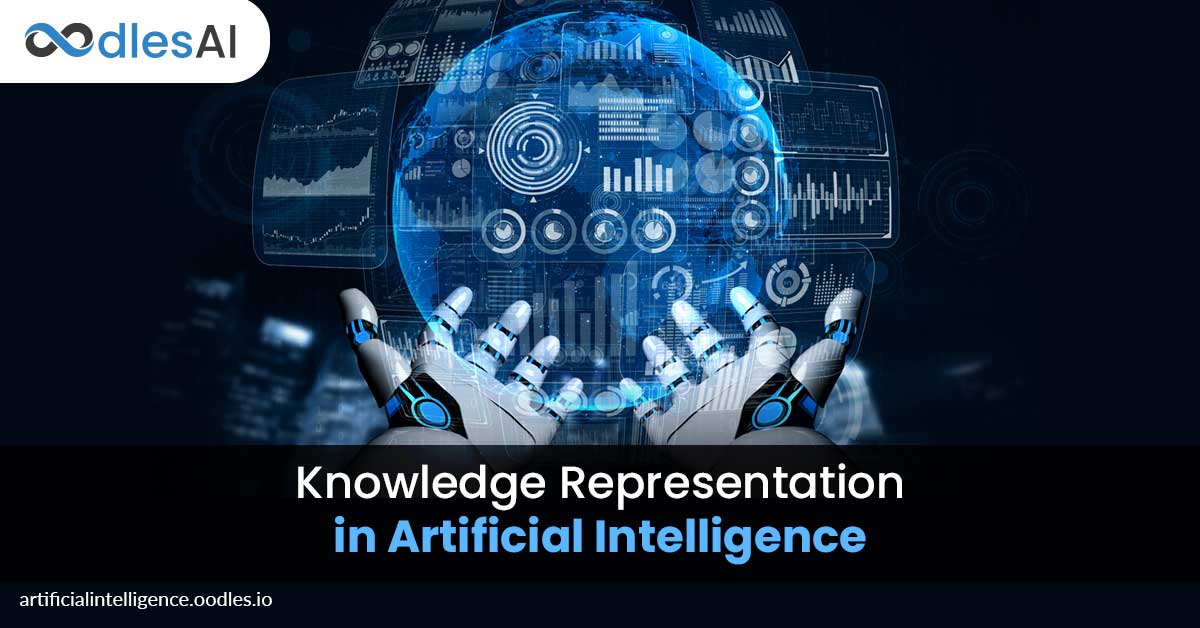Understanding Knowledge Representation in Artificial Intelligence
Humans are good at interpreting knowledge, understanding, and reasoning and with this knowledge, they are able to perform various actions in the real world. But the question is how do machines perform the same? In this blog, we will learn more about Knowledge Representation in artificial intelligence and how it helps the machines perform.
Knowledge Representation is a study of how the beliefs, judgments, and intentions of an intelligent agent will be expressed suitably for automated reasoning. The main purposes of Knowledge Representation include modeling intelligent behavior for an agent.
Under artificial intelligence services , Knowledge Representation translates the information from the real world for a machine to understand and then use this knowledge to solve complex problems like communicating with a human. It is not just about storing the data, it also allows a machine to learn from the knowledge and behave like a human.
There are different kinds of knowledge that used to represent the knowledge in AI are Objects, Events, Performance, Facts, and Knowledge-base.
Types of Knowledge:- There are 5 types of Knowledge are as follow:-
-
Declarative Knowledge – Declarative Knowledge includes concepts, facts, and objects and shows in a declarative sentence.
-
Structural Knowledge – It’s a basic problem-solving knowledge that describes the relationship between objects and concepts.
-
Procedural Knowledge – Procedural Knowledge is responsible for knowing how to do something and also includes strategies, procedures, rules, etc.
-
Meta Knowledge – It defines knowledge about other types of Knowledge.
-
Heuristic Knowledge – Heuristic Knowledge represents the expert knowledge in the field or subject.
The cycle of Knowledge Representation:- Artificial Intelligent Systems usually consist of many components to shows their intelligent behavior. This is the example of the different components and how it works:
The Relation between Knowledge & Intelligence:- In the real world, knowledge plays an important role in intelligence as well as creating AI. It demonstrates the intelligent behavior in AI machines. It is possible for a machine to act accurately on some input only when it has the knowledge or experience about the input. However, cloud machine learning solutions rely on historical data to drive actionable insights and value from the given system.
There is one decision-maker in this example whose actions are justified by sensing the environment and using the knowledge, so if we remove this part then it will not be able to show any intelligent behavior.
Techniques of Knowledge Representation:- There are 4 techniques of representing knowledge such as:
-
Logical Representation:- Logical representation is a language with some definite rules which deal with propositions and has no ambiguity in representation. It represents a conclusion that supported varied conditions and lays down some important communication rules. Also, it consists of precisely defined syntax and semantics that supports the sound inference. Every sentence can be translated into logics using syntax and semantics.
-
Semantic Network Representation:- Semantic networks work as another of predicate logic for knowledge representation. In Semantic networks, you will represent your knowledge in the form of graphical networks. This network consists of nodes representing objects and arcs that describe the connection between those objects. Also, it categorizes the object in several forms and links those objects.
-
Frame Representation:- A frame could be a record like structure that consists of a group of attributes and values to describe an entity in the world. These are the Artificial Intelligence data structure that divides data into substructures by representing stereotypes situations. Basically, it consists of a group of slots and slot values of any kind and size.
-
Production Rules:- In production rules, agent checks for the condition and if the condition exists then production rule fires and corresponding action is distributed. The condition a part of the rule determines that rule could also be applied to a problem. The action part brings out the associated problem-solving steps. This whole method is called a recognize-act cycle.
Representation Requirements:- A good knowledge representation system must have properties such as:
-
Representational Accuracy: It should represent every kind of needed knowledge.
-
Inferential Adequacy: It should be able to manipulate the representational structures to supply new knowledge corresponding to the existing structure.
-
Inferential Efficiency: The power to direct the inferential knowledge mechanism into the foremost productive directions by storing acceptable guides.
-
Acquisitional efficiency: The power to acquire new knowledge simply using automatic methods.
Approaches to Knowledge Representation:- There are different approaches to knowledge representation such as:
-
Simple Relational Knowledge:- It’s the only method of storing facts that uses the relational method. Here, all the facts a couple of set of the object are set out systematically in columns. Also, this approach is famous in knowledge systems wherever the connection between completely different entities is represented. Thus, there is very little chance for inference.
-
Inheritable Knowledge:- In this approach all data must be stored into a hierarchy of classes and should be organized in a generalized form. Also, this approach contains inheritable knowledge that shows a relation between instance and class, and it’s referred to as instance relation.
-
Inferential Knowledge:- The inferential knowledge approach represents knowledge within the kind of logic. Thus, it can be used to derive additional facts. Also, it guarantees correctness.
#Artificial Intelligence
